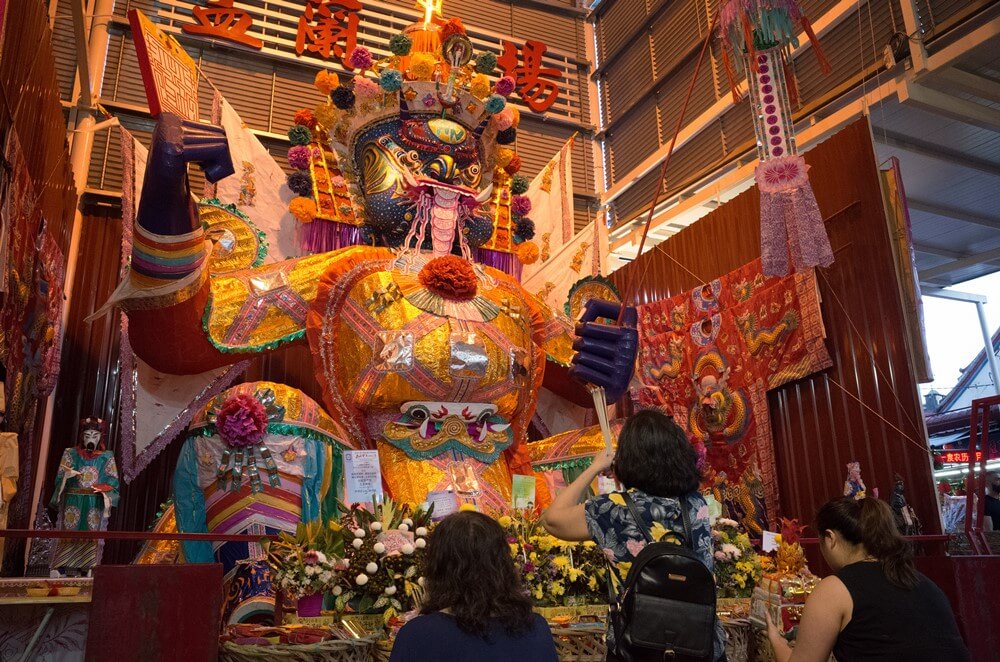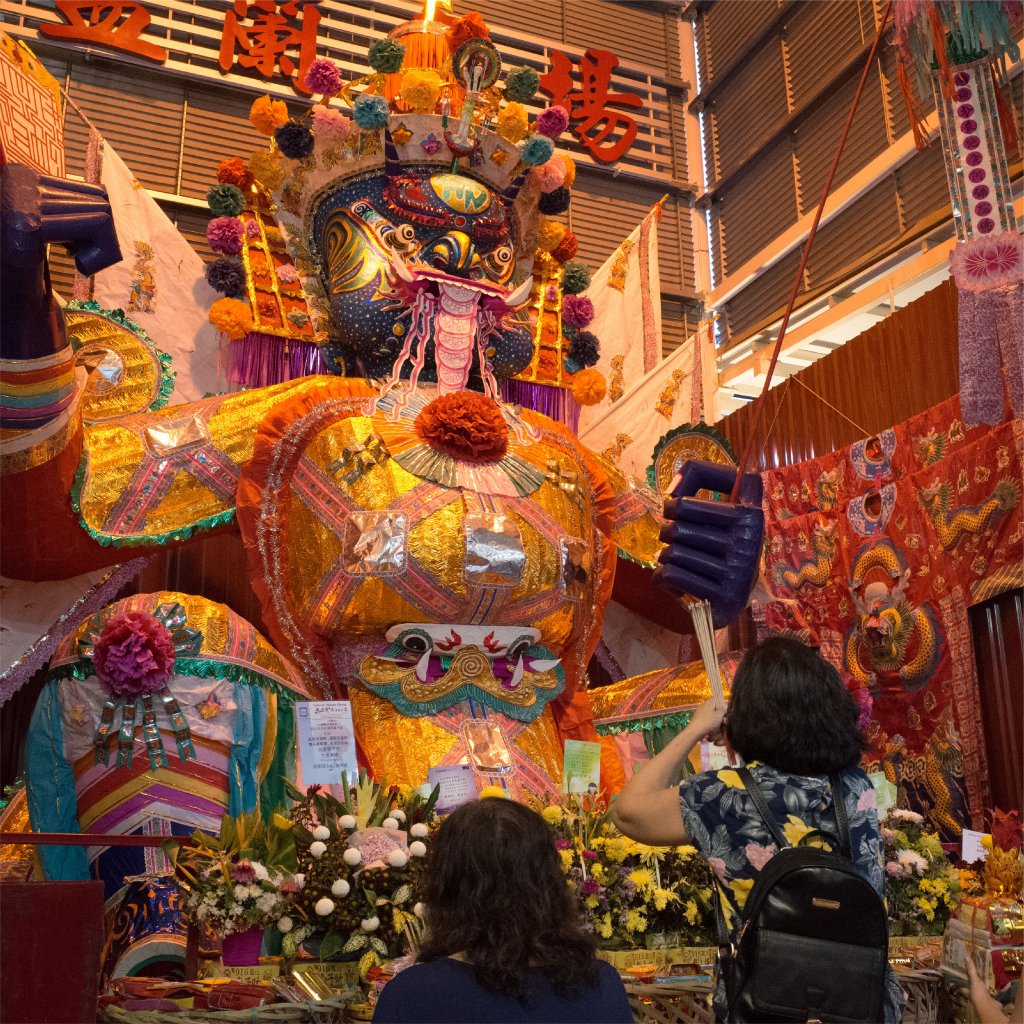
According to Taoist beliefs, when the Hungry Ghost Festival (also called Zhong Yuan) arrives at the beginning of the 7th month based on the Chinese Lunar Calendar, the gate of the hell opens and ghosts are released to roam in the human world for an entire month. During this period, it is common to see Chinese organisations/associations set up a massive altar in temporary tents where various offerings – which includes food, sticks of incense, joss paper money and other material goods made of paper such as cars, clothes, gold, and houses – are laid on tables.
At the altar, a huge paper-made giant effigy is placed in the centre. That figure is Da Shi Ye, the King of Hell, who is also known by other names such as Phor Thor Kong or Tai Su Yeah. The presence of Da Shi Ye’s effigy is due to the belief that he will oversee the proceedings of the festival and also ensure that offerings for the ghosts – which are indirectly given to them through dedicating the offerings to Da Shi Ye first – are divided fairly and in an orderly manner.
Da Shi Ye is portrayed as an intimidating, brightly coloured figure wearing a Chinese General’s outfit, with a fierce looking expression on his face that is coloured in either red or blue, flames for eyebrows and a long tongue.
In contrast to Da Shi Ye’s eye catching figure, a small figure of Guan Yin, the Goddess of Mercy, sits on top of his head-dress, almost unnoticeable. This is meant to symbolise that Da Shi Ye is actually an incarnation of Guan Yin, as it is believed that as a woman, she isn’t intimidating enough to unruly ghosts. Hence, she takes on this fearsome form to intimidate and control restless spirits.
When the 7th month of the lunar calendar arrives, it’s common to see preparations for the Hungry Ghost Festival going on in full swing at almost every residential or city block. Stage platforms will be set up everywhere, with tables laden with sacrificial offerings and stray sheets of paper money drifting through the air sky.
While many Chinese communities across Malaysia celebrate the event, Penang’s Hungry Ghost Festival in the most eye-catching. Stage platforms typically feature drama performances, singing and dancing as entertainment for the ghosts to watch everywhere, but the ones in Penang goes a step further in setting up effigies in a manner that looms over the actors and audience.
Regardless of whether the ceremony is organised in assembly halls, in temples or temporary tents, the effigy of Da Shi Ye is always present, watching over everyone passing by – living and ghosts alike.
Copyright Statement This article and video is original content created by Xiao En website, to whom the copyright belongs to. The content should not be reproduced without permission, otherwise it will be regarded as infringement. Xiao En reserves the right to pursue legal action against unauthorised use of the content.



